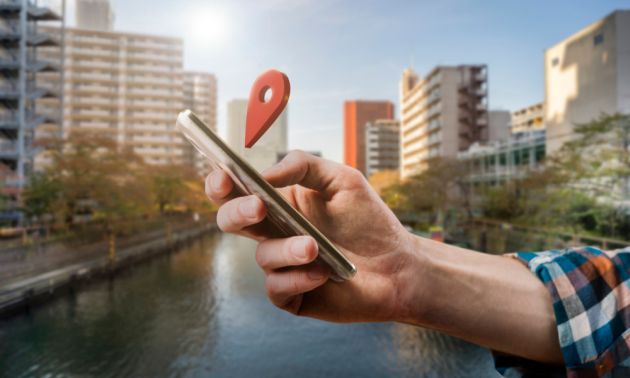In Why Do Hyperlocal Apps Have So Much Location Friction?, we had a look at several location-related friction hotspots in hyperlocal apps like Dunzo, Ola, Pizza Hut Delivery, Rapido, and Uber.
Subsequently, in Three Innovations To Remove Location Friction In Hyperlocal Apps, we covered many innovative features built by apps to overcome the fundamental limitations of geolocation technology that cause these friction hotspots like chatbox, flashlight, etc.
At the time, I’d not used BlinkIt. After my very first encounter with this leading quick commerce app, I’m jumping to the conclusion that it’s the mother of all LBS apps when it comes to location friction.
I recently tried placing an order on my go-to quick commerce app Swiggy Instamart. After I added various items, I tapped the Go to Cart button as usual. Normally, it’d take me to the next screen where I can view the items in my shopping cart and make the payment. This time, however, as soon as I pressed the button, the app crashed. I tried after a few minutes, and I still got the same error message.
I often use quick commerce to stock up but, on this occasion, I was placing a top up order, so it was urgent.
Consumers have two shopping occasions: Top Up and Stock Up. Top Up is the charter target group for Quick Commerce whereas Stock Up has been the mainstay of Supermarkets. Zepto et al are now planning to expand into Stock Up. https://t.co/o25jvkh4xq
— Ketharaman Swaminathan (@s_ketharaman) February 26, 2025
I decided to try BlinkIt, another quick commerce app.
I downloaded and installed the app from Play Store. Registration and onboarding were frictionless. I then selected my items and placed the order. A few minutes later, a CSR called me and told me that they had a server problem, due to which my order was routed to a dark store that was outside my catchment (typically 3 kilometers for quick commerce companies). They said they had to cancel the order and asked me to place another order after some time. Meanwhile, they promised to refund the payment by way of promo code. Since it was a small amount, I didn’t bother to insist that they should send the refund to the credit card from which I’d made the payment.
After 15-20 minutes, I placed the order again. Soon afterwards, I saw the delivery agent moving. However, the map was stuck at 1 minute ETA for more than 10 minutes. I then called the delivery agent. He asked me where exactly my location was. When I told him, he was shocked – he’d landed up in another place six kms away!
So, the second order also had a janky location, just that nobody at BlinkIt ops team had noticed it, unlike the first order.
I then concluded that BlinkIt is the MOA LBS apps re. location friction, and asked its CSR to make the refund to my credit card account since I wasn’t going to place any further orders with this company.
In parallel, I wondered if there was some specific problem with my phone because
- Swiggy didn’t work for hours
- Others don’t have a problem with BlinkIt.
I found both issues very strange.
Two other platforms that take proactive actions à la Swiggy:
Airtel for outage of its Airtel xstream Fiber broadband Internet service.
RedBus bus ticketing app (now part of ixigo) for failure of two factor authentication during credit card payments.
Swiggy rarely has a downtime. In fact, in my nearly 10 years of using its app, I’ve never faced a single outage. Furthermore, I’ve heard that Swiggy uses an observability platform to proactively spot and prevent outages. For the uninitiated, observability checks the health status of microservices and automatically flags the ones that are down so that someone from the Site Reliability Engineering (SRE) team can fix it proactively instead of waiting for the customer to suffer a bad CX and raise a ticket.
I checked Swiggy after four hours, it worked fine, and I was able to place my order.
Point #2 is strange since the others who don’t have a problem with BlinkIt include those in my own family! They regularly place orders on BlinkIt from the same location and get the goods delivered successfuly to the same location. I was intrigued by this issue and I went to my go-to virtual assistant: ChatGPT. Even Chat thought this issue was weird and gave me 10 tips to fix this issue!
I’d already tried some of them and skimmed past them. However, I was tickled by the last tip:
Check Smart Lock (if active): Since we know you had some issues finding Smart Lock settings earlier, double-check that it’s not unintentionally keeping location services off or inconsistent.
I was mighty impressed that ChatGPT remembered my past chats and gave me a tip that was personalized to my specific situation related to Smart Lock in my phone. In the past, Chat has also remembered the version of my PowerPoint and given me instructions for it instead of the latest version.
For all the CRM tools that human CSRs use, not a single one has ever remembered my past interactions and given me a personalized response. Many of them can’t even remember what happened five minutes ago in the present session!
It may be too early to call AGI (Artificial General Insurance) but what is AGI anyway?
Conspiracy Theory: AGI is GAI industry’s decoy to divert the spotlight from present legal issues like copyright violations, and hitch regulation to a moving target like AGI, so that GAI gets a long enough runway to become Too Big To Be Regulated.
— Ketharaman Swaminathan (@s_ketharaman) January 12, 2024
For the uninitiated, in the above tweet:
AGI refers to Artificial General Intelligence, which is a type of artificial intelligence that matches or surpasses human cognitive capabilities across a wide range of cognitive tasks; and GAI refers to Generative Artificial Intelligence like Anthropic, ChatGPT, and Grok.
